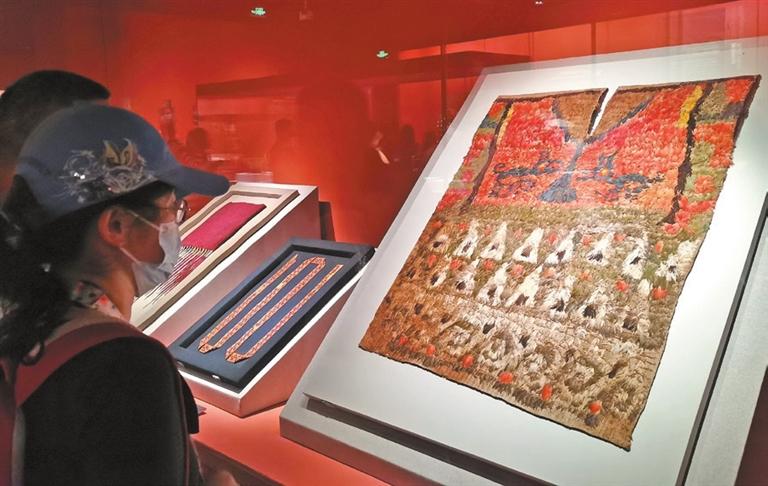
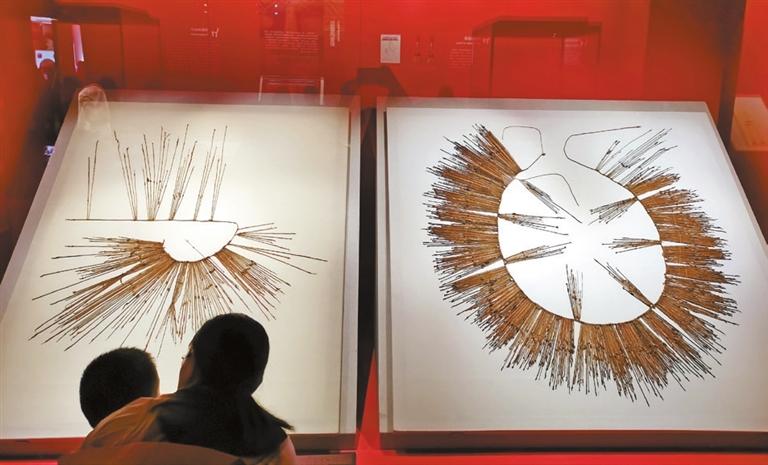
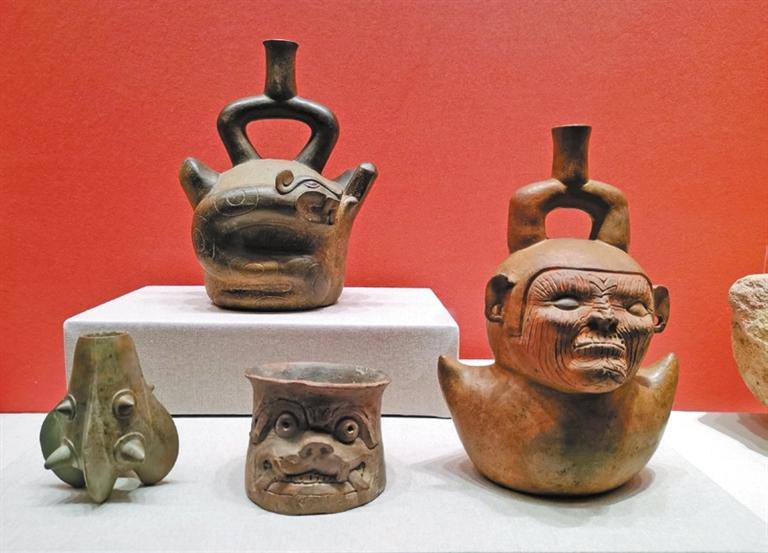
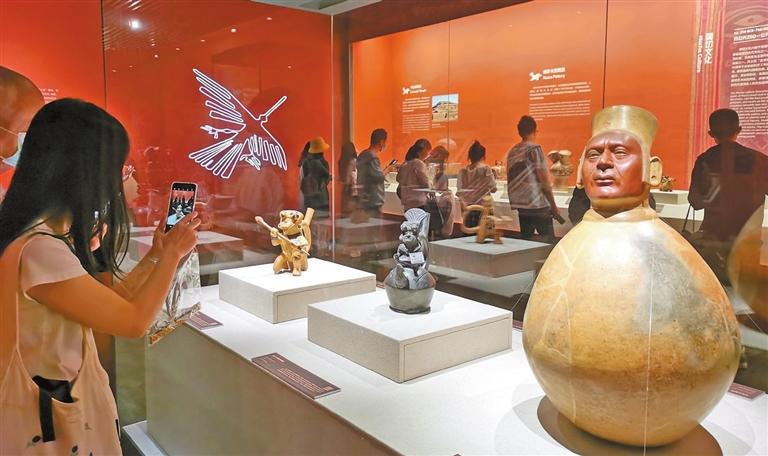

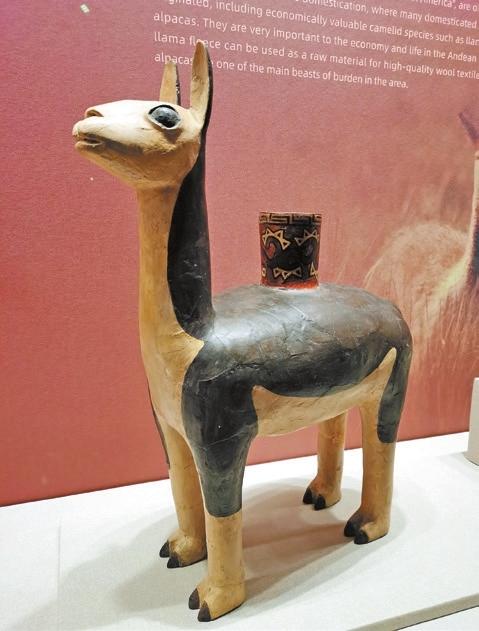
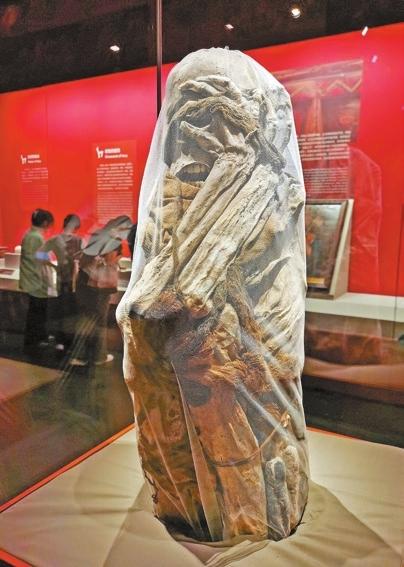
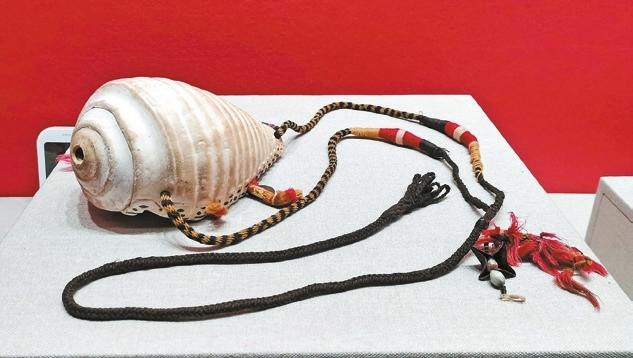
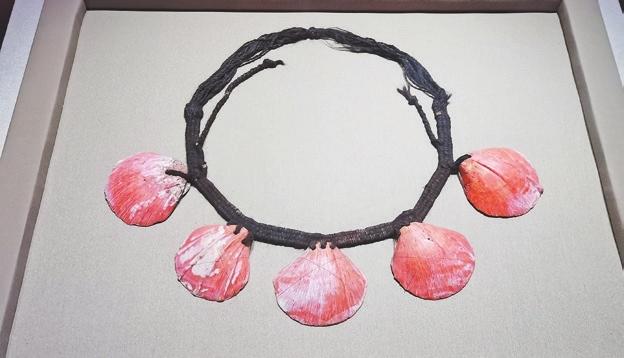
Cao Zhen caozhen0806@126.com VISITORS wearing Native American headbands were transported into a world of wonder as they wandered in an exotic exhibition unveiled Friday morning at Nanshan Museum. Titled “The Inca and Their Tawantinsuyu: The Land of Four Quarters,” the exhibition boasts a collection of 168 pieces or sets from 14 museums in Peru. Stepping into the exhibition, visitors encountered an array of striking artifacts: from exquisite pottery adorned with lively patterns, colorful textiles, and gleaming goldware, to peculiar bottles, feline-shaped vessels, and even an eerie mummy. The immersive experience seemed to whisk them back thousands of years, offering a glimpse into the enigmatic Andean civilization of South America. The Inca, which translates to “son of the sun,” stood as one of the preeminent civilizations of the Americas alongside the Maya and Aztec cultures. Emerging from the cradle of Cusco in Peru, the Inca culture flourished on the foundations of numerous pre-Inca Andean cultures, culminating in the formidable Inca Empire, known as the Land of the Four Quarters. The Inca Empire was located in the Andean regions of South America, primarily in modern-day Peru and eventually stretching from Ecuador to central Chile. With a rich history and the highly stratified society, the Incas distinguished themselves as a prominent indigenous civilization in the annals of the Americas. Beyond their territorial expanse, the Inca civilization bequeathed a legacy of world-renowned historical and cultural relics. From the awe-inspiring Machu Picchu citadel and the agricultural wonder, Moray Terraces, to the intricate Inca Road System and enigmatic quipu (knotted strings used for recording and communication), these remnants showcase the ingenuity and sophistication of the Inca society. Governed by a centralized authority and deeply rooted in agriculture — especially the cultivation of maize, potatoes, and quinoa — the Incas left an indelible mark on the culture of the Andean region. The exhibition not only displays artifacts from the Inca Empire, but also sheds light on the contributions of pre-Inca civilizations such as the Chavin, Nazca, Tiwanaku, Moche, and Wari. For several thousand years prior to the Spanish conquest of Peru in 1532, various kingdoms thrived in western South America, collectively known as the Andean civilization. Though the Andean civilization lacked a written language, its brilliance and significance shine brightly throughout history. From their mastery of textiles, metalworking and pottery to the intricate designs that reflect deep cultural and religious beliefs, the artifacts on display evoke a sense of awe and wonder. The exhibition has detailed Chinese and English descriptions, inviting visitors to delve deeper into the fascinating world of the Andean civilization. Visitors taking photos with alpaca toys and other installations at the exhibition, and sharing them online are eligible to claim a commemorative headband, adding a touch of interactivity to this enriching cultural experience. Dates: Until Aug. 11 Booking: WeChat miniprogram “南山博物馆预约” Venue: Nanshan Museum, Nanshan District (南山博物馆) Metro: Line 1 or 12 to Taoyuan Station (桃园站), Exit B | 
